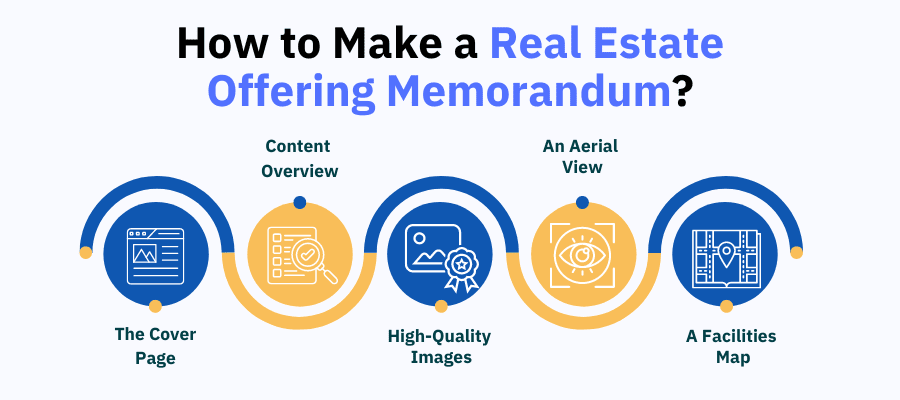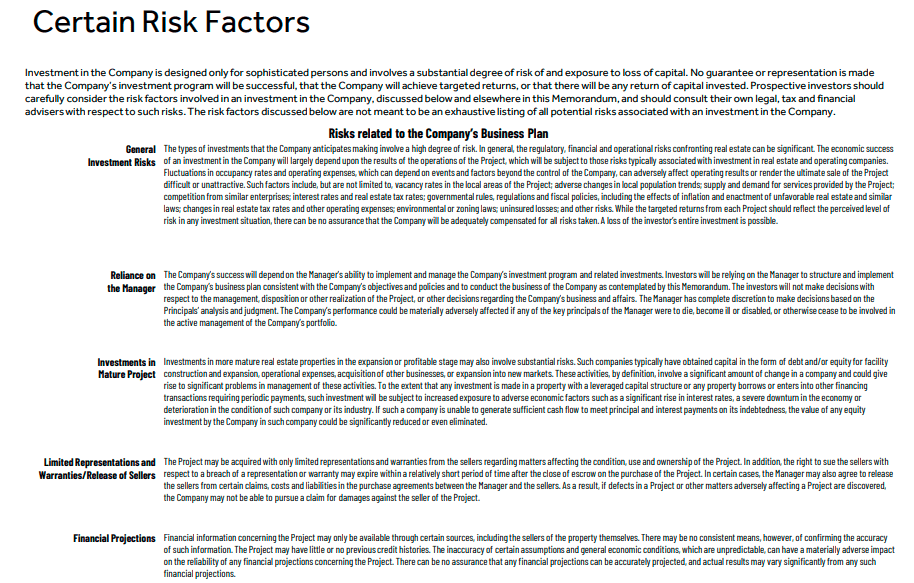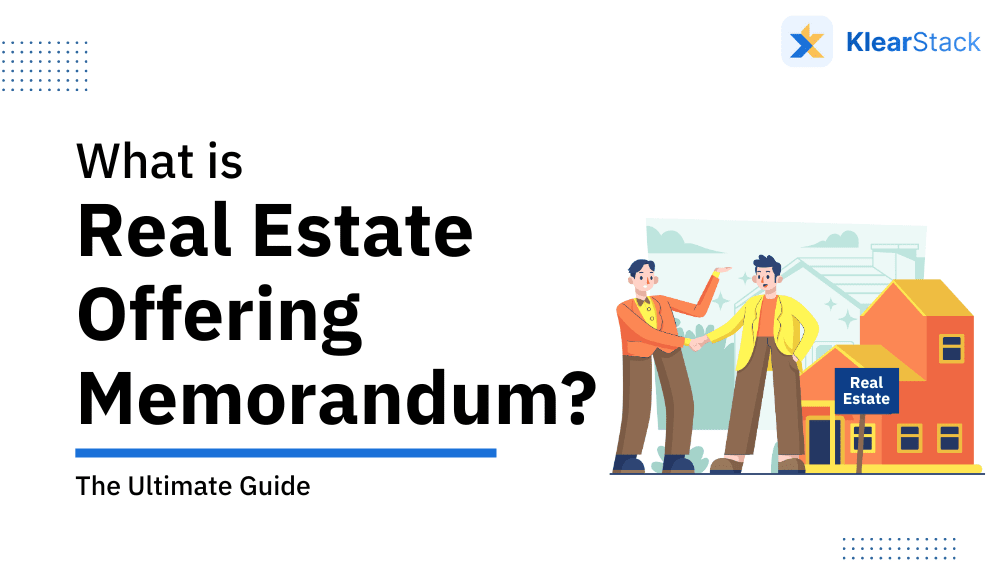An Offering Memorandum, often referred to as a Private Placement Memorandum (PPM), is a comprehensive document that serves as a vital communication tool between sellers and potential buyers, outlining essential information about an investment opportunity, particularly in real estate.
What’s the purpose of a Real Estate Offering Memorandum?
The purpose of a Real Estate Offering Memorandum is to encourage potential investors to purchase a property. It would highlight elements such as—investment objectives, risks, financial statements, and business operations, thus aiding potential investors in making informed decisions.
What Makes a Good Offering Memorandum?
Crafting an effective Offering Memorandum involves a delicate balance of clear and concise information, thorough financial analysis, and adherence to securities laws and regulations set by bodies like the Securities and Exchange Commission (SEC). Such an Offering Memorandum would encourage transparency and trust between sellers and potential buyers.
Example of an Offering Memorandum in Real Estate
Companies in the real estate sector use Offering Memorandums to present investment opportunities to potential investors.
Here’s an example of a real estate offering memorandum:
A real estate firm plans to construct a commercial office space in a growing business district. They create an Offering Memorandum that lays out the project specifics, like location and expected profits.
The document analyzes the following elements that resulted in fostering investor’s trust :
- Objective: Capitalizing on the demand for modern office spaces.
- Possible risks, such as construction delays or economic downturns, to give potential investors a clear picture.
- Financial projections, like estimated rental income, help investors gauge potential returns.
- Experienced team, and
- Successful track record in similar projects.
Investors review this Offering Memorandum, assess risks and rewards, and decide whether to invest in the project.
Why is an Offering Memorandum Essential in Real Estate?
An Offering Memorandum is important in the real estate domain, as it builds trust between potential investors and business owners.
Investors can evaluate the credentials of the management team and understand the business’s operations, fostering a sense of confidence in the investment.
Clear explanations of potential challenges and risks demonstrate the company’s commitment to full disclosure, reassuring investors that they are entering the investment with their eyes wide open.
This level of transparency not only improves trust but also establishes a strong foundation for a successful and mutually beneficial real estate transaction.
What are the Consequences of Breaking a Memorandum of Agreement?
A breach of the MOA significantly damages the relationship between potential investors and business owners.
Investors may feel deceived or misled if the actual conditions differ from what was initially presented. This breach of trust can lead to frustration, disappointment, and a tarnished perception of an owner’s credibility.
They may choose to pursue legal action against the owner.
As a result, business owners could face financial penalties and the obligation to compensate investors for their losses. Such legal actions can tarnish the business owners’ reputation, making it challenging to attract future investors and partners.
How to Make a Real Estate Offering Memorandum?
Here’s a step-by-step guide to creating a compelling Real Estate Offering Memorandum:

1. The Cover Page
Begin with a professional cover page that includes the property’s name, an engaging image, and the company’s logo.
This page sets the tone for what investors can expect to find in the Offering Memorandum.
2. Content Overview
In the “Content Overview” section, outline the investment’s objectives, risks, terms, and more.
This prepares potential investors for the information ahead.
3. High-Quality Images
High-quality images must show the property’s exterior and interior.
Visuals grab attention and help potential investors visualize the investment.
4. An Aerial View
Include a map or diagram. Highlight the property’s location with an aerial view.
This showcases the property’s surroundings, nearby amenities, and growth potential.
5. A Facilities Map
Attach a facilities map. It will highlight key features such as parking areas, recreational spaces, and common amenities.
This map provides a visual representation of the property’s layout.
What Should a Real Estate Offering Memorandum Include?
Your Real Estate Offering Memorandum should include the following key components:
1. Investment Overview
Provide a brief introduction to the investment opportunity, including the property’s name, location, and purpose.
2. Investment Objectives and Strategy
Clearly define the objectives of the investment, whether it’s capital appreciation, rental income, or another goal. Explain the investment strategy, showcasing how these objectives will be achieved.
3. Property Details
Include comprehensive information about the property, such as its size, type, and features.
4. Financial Projections
Present detailed financial projections, including income forecasts, expense estimates, and potential returns.
5. Risk Factors
Address market fluctuations, regulatory changes, and other challenges, as potential risks associated with the investment.

6. Management Team
Introduce the property’s management team, including their biographies and relevant expertise.
7. Legal Considerations
Explain compliance with securities laws and regulations. Mention any necessary disclaimers associated with compliance.
8. Call to Action
Position your contact information and details strategically, ensuring that readers turn into investors.
They must have an easy pathway to get in touch with you, regardless of their location.
How Can Offer Memorandum Help Property Managers, and Brokers in Growing Your Business?
By providing detailed information about investment opportunities, including objectives, risks, and financial projections, Offering Memorandums demonstrates a commitment to openness and honesty. Investors and clients appreciate the transparency, which in turn builds trust in your expertise and integrity.
Property managers and brokers who utilize Offering Memorandums are better equipped to cultivate trust and position themselves as reliable partners in the competitive real estate market.
Conclusion
Creating a real estate Offering Memorandum (OMs) can be a bit of a hassle sometimes—investment objectives, risks, financial statements, and business operations—all these elements must be highlighted within one document.
With that said, KlearStack, an automated document processing software can take care of your real estate Offering Memorandum. Within minutes, it can identify what your investors are looking for, and highlight those exact details in your real estate offering memorandum.
With KlearStack, you can sit back and focus on the important stuff, i.e., building trust with investors. All you have to do is upload your data on KlearStack, and it will create an offering memorandum that is clear, organized, and professionally pleasing, saving you time and money.
Get started with its free trial version now!
FAQs on Real Estate Offering Memorandum
An offering memorandum aims to inform potential investors about an investment opportunity, fostering transparency and aiding informed decisions.
Offering a memorandum typically includes property details, financial projections, risk factors, management biographies, and legal considerations.
An offering memorandum is not binding but offers transparency. Binding agreements follow after investor commitment through a subscription agreement.






